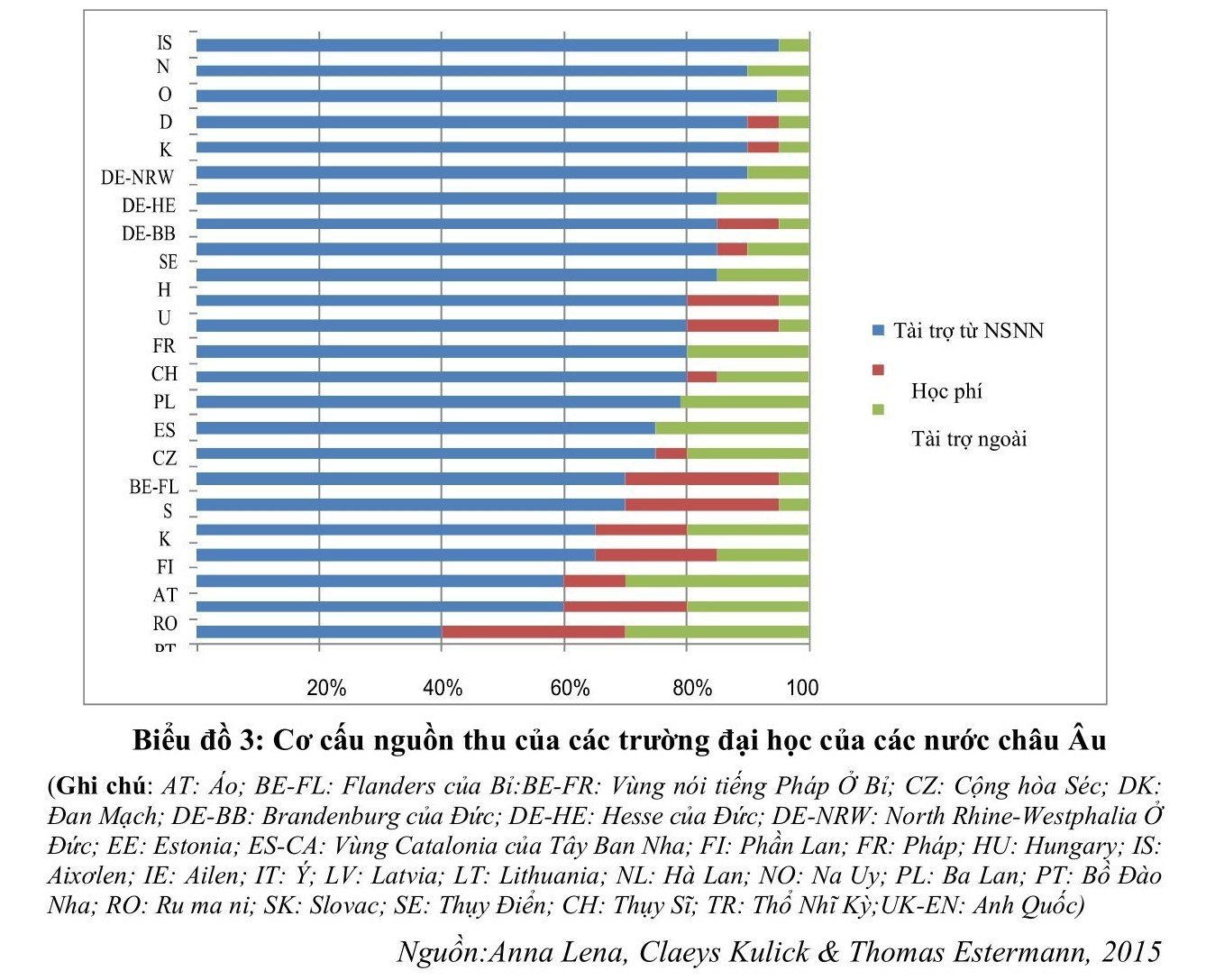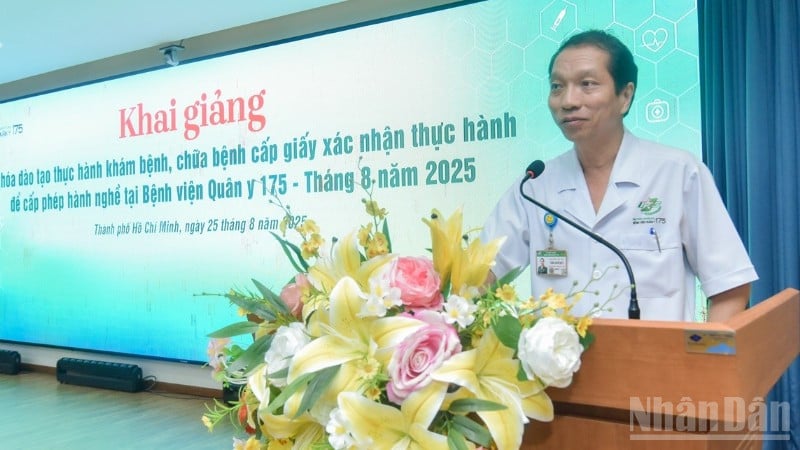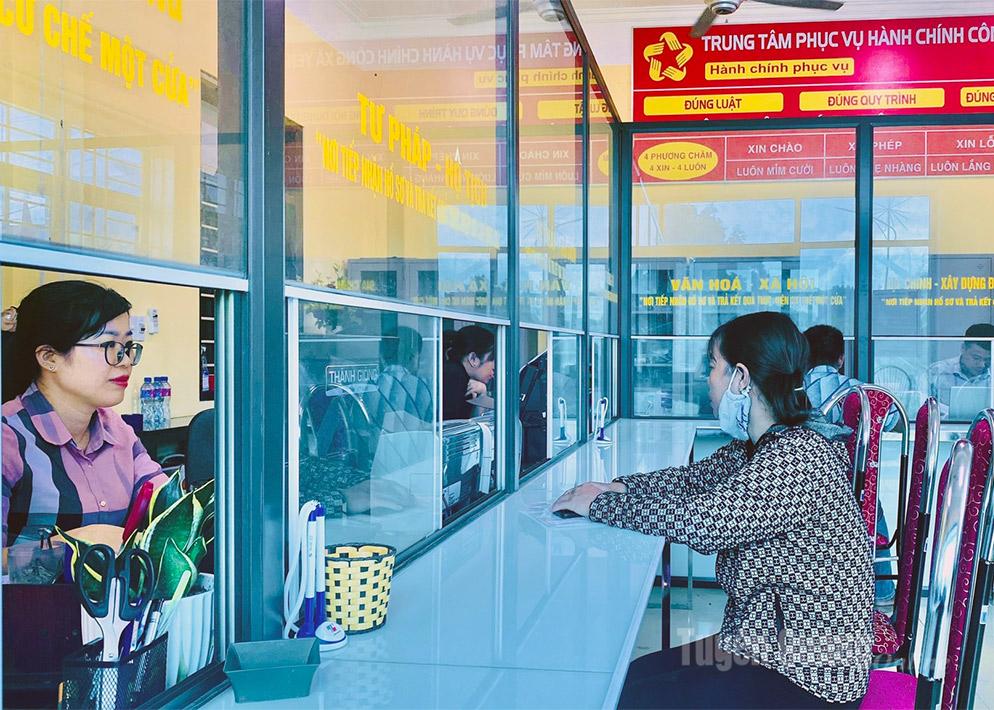IN MANY EUROPEAN COUNTRIES, THE STATE BUDGET FUNDING IS UP TO 90%
At a conference on university autonomy held in Ho Chi Minh City in April, Dr. Nguyen Thi Mai Hoa, Vice Chairwoman of the National Assembly's Committee on Culture and Education , still believed that the world trend of financial investment in higher education (HE) is to innovate in the direction of reducing dependence on the state budget and allowing universities to proactively seek new sources of income, diversify resources attracted from society (enterprises, learners) and adjust spending and manage finances effectively. However, funding from the state budget still plays an extremely important role in the development of education in general and HE in particular.

The proportion of state budget expenditure on higher education is currently only about 0.27% of GDP, much lower than other countries in the region and the world.
However, according to Thanh Nien Newspaper, the trend of reducing dependence on the state budget comes from the context of European higher education, which has enjoyed huge public investment. A research group from the University of Commerce also said that, although with many different approaches, studies on higher education all agree that financial investment from the state budget plays an extremely important role in promoting the development of universities and improving quality.
In most European universities (except for some countries such as the UK, Ireland, etc.), the state budget accounts for 70-80% of the revenue. In some countries such as Iceland, Denmark, Norway, the state budget accounts for over 90% of the revenue of universities. In some countries such as the UK, Ireland, Romania, Portugal, due to lower government funding, universities tend to share costs with students or seek other additional funding sources.
TUITION FEES OF CHINA 'S TOP UNIVERSITIES ARE LOWER THAN IN VIETNAM
Also in a workshop on university autonomy organized by the Ministry of Education and Training, Associate Professor Dr. Vu Hai Quan, Director of Ho Chi Minh City National University, asked: "Is the policy of cutting regular expenditures for autonomous universities in line with international practice?" Looking at the neighboring country (China), their two leading universities, Tsinghua University and Peking University, have undergraduate tuition fees for the 2018 school year of around 18 million, lower than the tuition fees of autonomous universities in Vietnam. However, the average monthly salary of professors at these two universities is estimated at around 82 million VND, much higher than their colleagues in Vietnam. This figure shows that the level of public investment in higher education in China is very large.
According to Associate Professor, Dr. Vu Hai Quan, the process of implementing university autonomy in Vietnam poses three huge challenges related to university finance. Without a system of synchronous solutions, it will limit the access to higher education for a large number of students from difficult circumstances, causing universities to pursue training programs that are easy to recruit, causing an imbalance in human resources in the national development strategy, including: no longer being guaranteed funding from the state budget; no suitable credit policy for student loans; and no diversification of revenue sources.

WE CONSIDER THE ROADMAP TO INCREASE THE PROPORTION OF SPENDING ON HIGHER EDUCATION
Ms. Hoa also acknowledged that Vietnam's public investment in higher education is still limited, reaching only 4.33 - 4.74% of the total budget expenditure for the education and training sector. Comparing the proportion of state budget expenditure for Vietnam's higher education/GDP in the 2018 - 2020 period shows that the proportion of state budget expenditure for higher education is currently only about 0.27% of GDP, much lower than that of other countries in the region and the world.
The criteria for allocating the state budget to higher education institutions are currently based only on the budget capacity and input factors (scale, number of students; number of staff; history of state budget allocation in previous years...) and are not linked to quality criteria and output results or policies on bidding and ordering for the provision of public services. The budget allocation through different governing bodies results in a lack of consistency in criteria and is not truly fair in benefits.
The tuition fee to be collected from students should be determined based on the average total training cost minus the state support fund, to ensure training quality. The state should expand the scope, subjects and value of support and loans for students. In addition, consider building a roadmap to increase the proportion of the state budget spent on higher education calculated on GDP to catch up with countries in the region; focus investment on a number of strong higher education institutions, especially in a number of priority sectors and fields to form a number of international-class, pioneering higher education institutions with the role and task of leading the system, creating a driving force for leading and developing science - technology and socio-economic development.
Source link





![[Photo] General Secretary To Lam attends the 80th anniversary of Vietnam's diplomacy](https://vstatic.vietnam.vn/vietnam/resource/IMAGE/2025/8/25/3dc715efdbf74937b6fe8072bac5cb30)









































































































Comment (0)